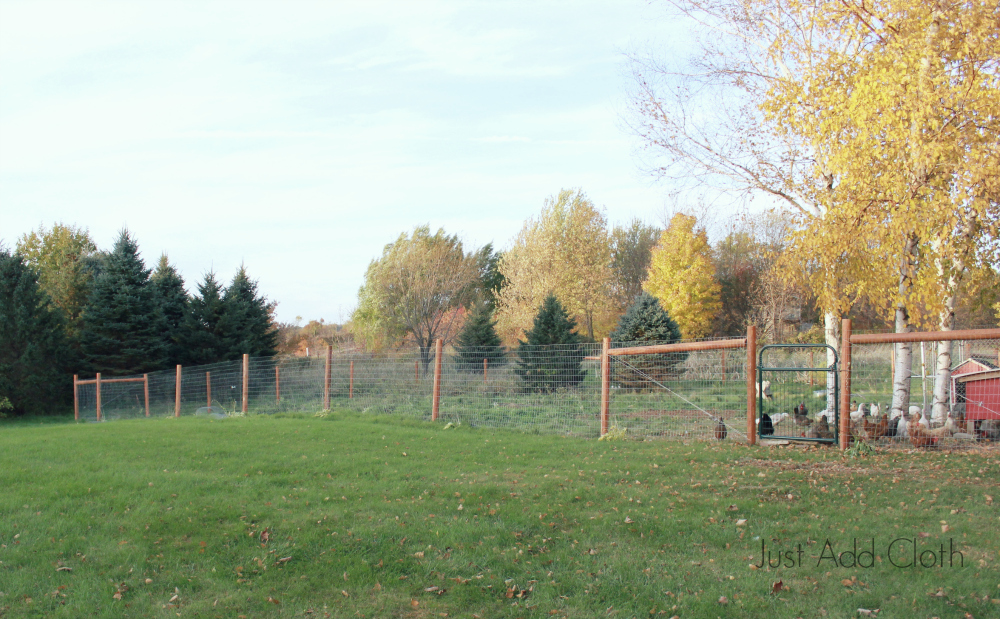
When we first let our chickens out of their run to free range, we were clueless and had no idea what scratchers they can be. All of our landscaping was destroyed. Oh well. We had just purchased that house and knew we would never keep that landscaping looking like that anyway.
But then we got our gravel beds and irrigation set up for our tree farm and it became apparent we couldn’t let the chickens have total freedom or they would dig up our saplings and destroy our operation.
So we decided in order to keep the birds contained yet still free range, we needed farm fencing.
We decided to build their huge yard behind their protected run so that the protected run was a pass-through to the yard. We also installed a gate at the east side near the food coop.
Our protected run has two larger coops attached and an additional three shelters inside the run. The birds have 100 square feet of indoor space between their coops, plus 500 square feet of protected, predators prove space in the run. The predator-proof run is constructed of four cyclone fenced dog kennels with hardware cloth buried 18 inches down on the perimeter and also wired across the top. My idea was, if it could keep large, wild dogs IN, then it should keep the predators OUT. And it has. We have watched the coyote circle it and yip for hours, but they never get in. Neither has the fox, raccoons, cougar, or martins. The entire back end of the run is surrounded by our new farm fenced bird yard.
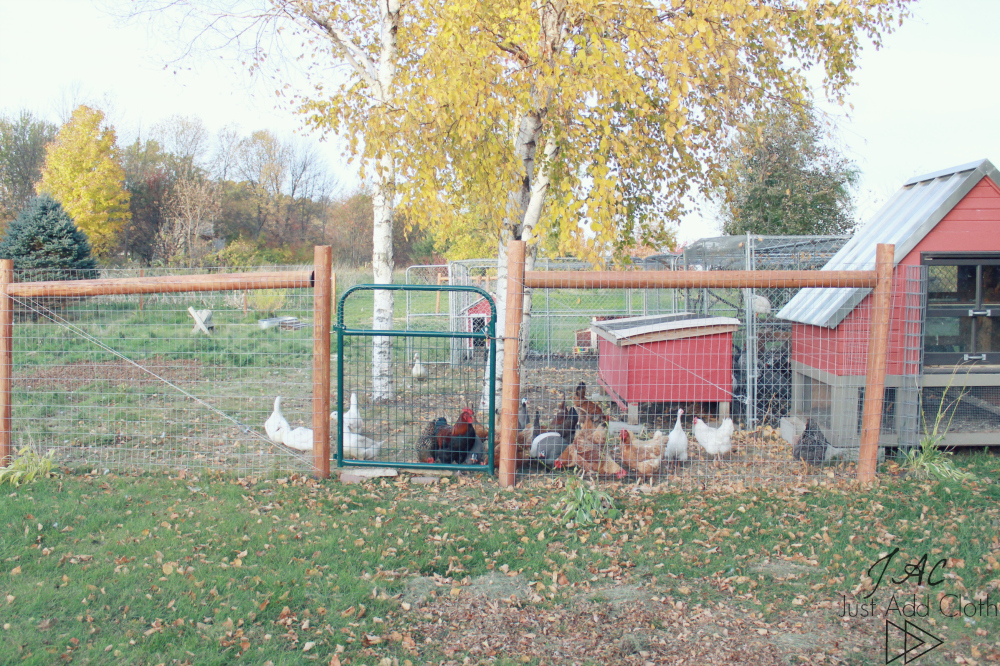
For the farm fencing, we went with 8 ft cedar posts with a five inch diameter, and welded goat wire. We also installed a 48 inch gate that swings both directions for bringing water and food come winter. I needed a wide gate since the snow often gets around six feet deep in that area and the mounds from shoveling really add up during our long winters.
I purchased the posts, wire, and gate from Fleet Farm.
Fence posts
Welded wire
Fence gate
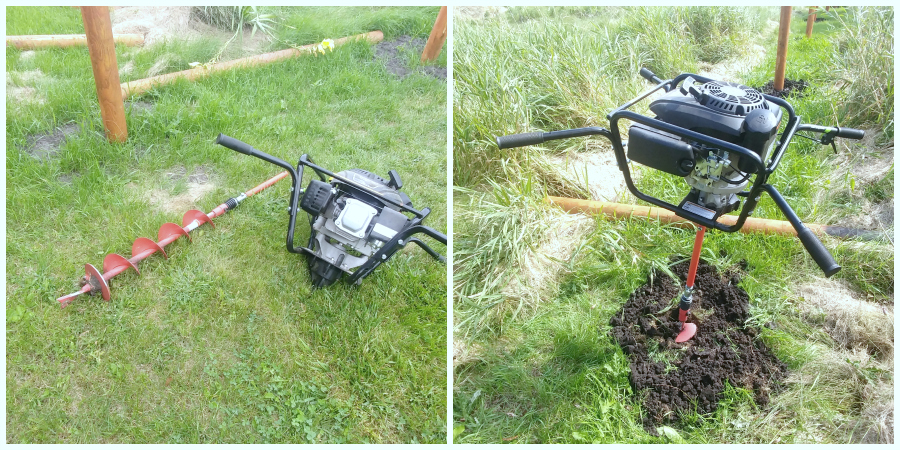
The real work was augering out the post holes. We have a manual post hole digger, but that would have taken months. So…..the auger. Not a Bobcat. Just a power-head and four handles, with a six inch wide bit and an extender to make it over 30 inches in depth. We augered our 40 holes, each 30 inches deep, for the posts. (Talk about an upper body workout.) This was quite a task with our Minnesota heavy clay soil.
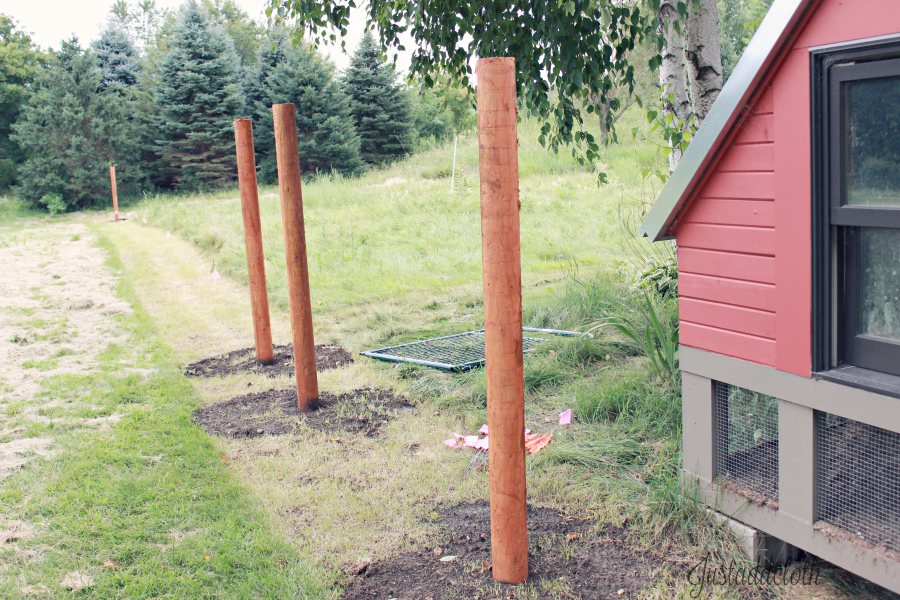
Although it was nothing compared to augering out 180 holes with an 18 inch wide bit for our irrigation field!
We installed the last posts a couple feet from the run kennels and then ran goat wire right to the kennel.
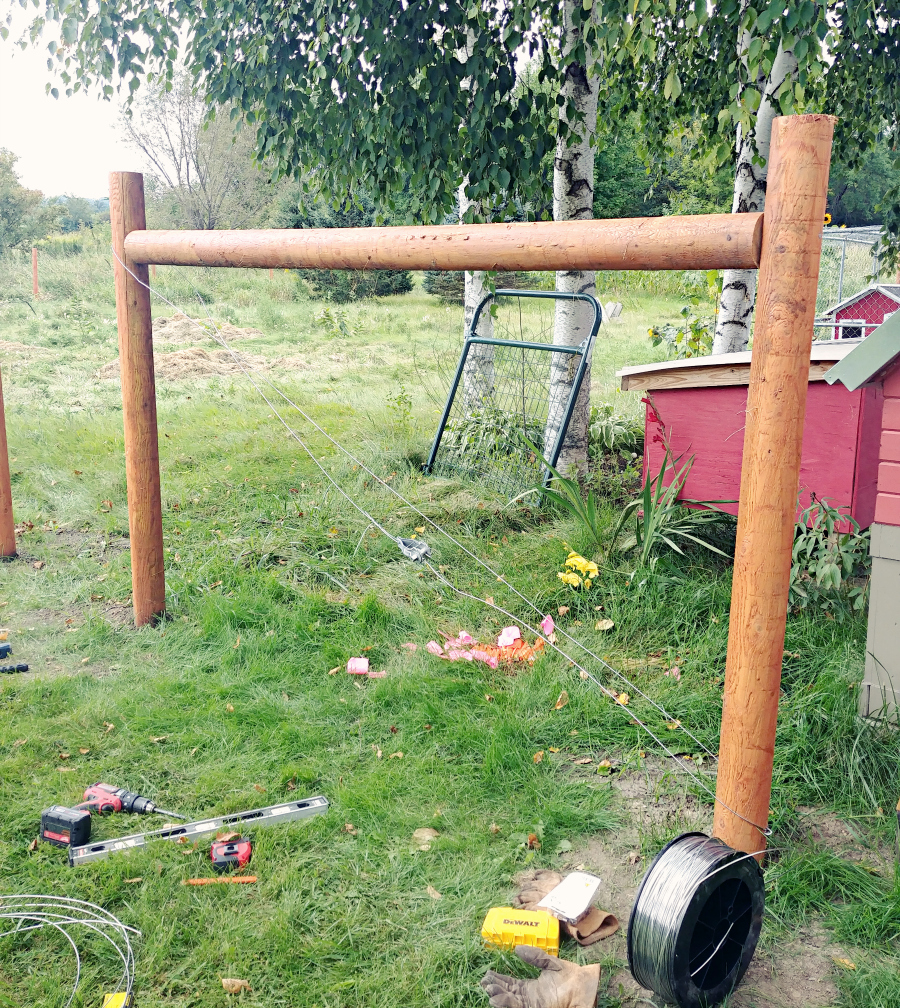
For the corners, we used an H-brace approach to reinforce the corner post. We used the same cedar posts in the brace, diagonal tension wire, and ratchets. If you are unfamiliar with how to install an H-brace, check out this tutorial.
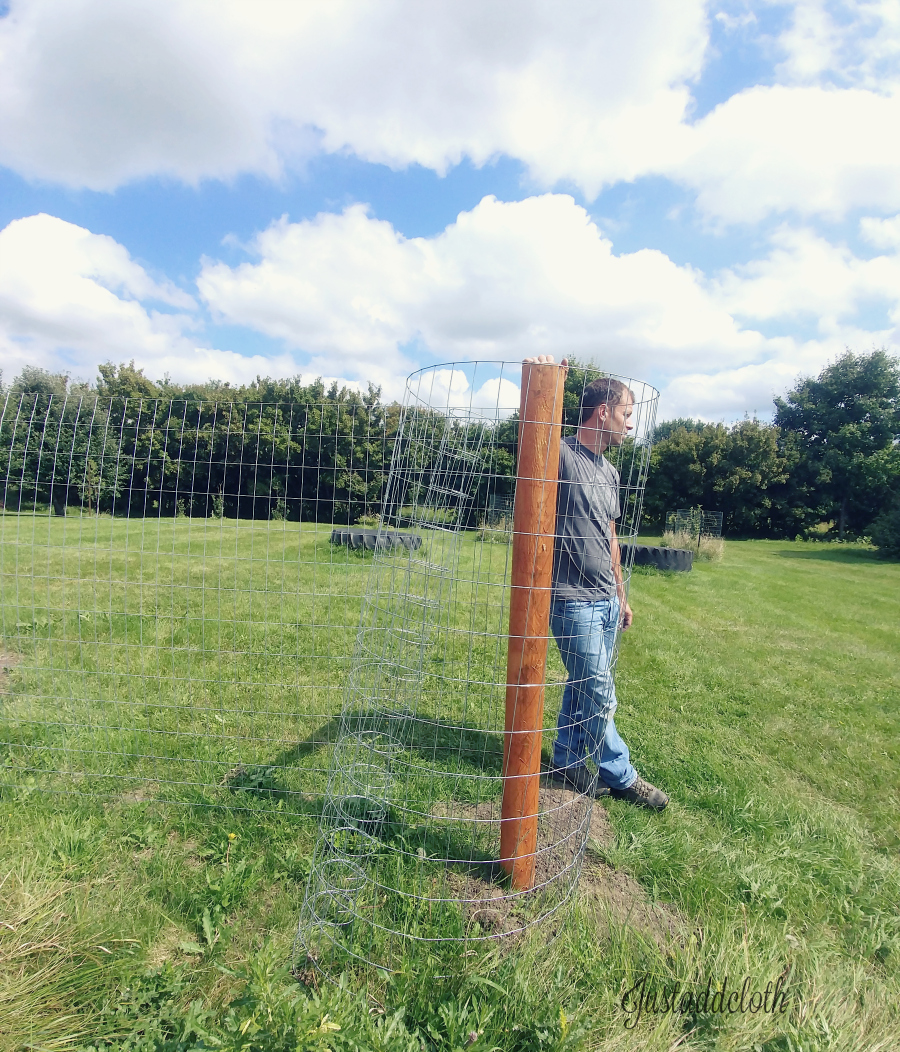
We attached the goat wire with general fence staples. We did not use a stretcher for the wire, just human strength. Since our posts were not that far apart, we felt the tension was enough with just manual strength. If we had used fewer posts, I would have purchased a stretcher.
We used 60 inch goat wire with eight foot posts, so the fence would be five feet high. This is high enough to keep our chickens inside, but allows the guineas the freedom to come and go.
Now, instead of our fowl getting mucked up in their muddy protected run all day, we can open their back gate and they have a 10,000 square foot bird yard to frolic. We put in a makeshift duck pond for them to access fresh water and planted a weeping willow in the middle for eventual shade. Our corn and sunflower field is next to the west side of the bird yard, so we can periodically toss a couple ears of corn and sunflower heads into the yard for them to snack.
We only have one chicken who ever flies over the fence. The guineas can fly over, but they usually come right back after some wandering. The guineas don’t scratch up the sapling fields like chickens.
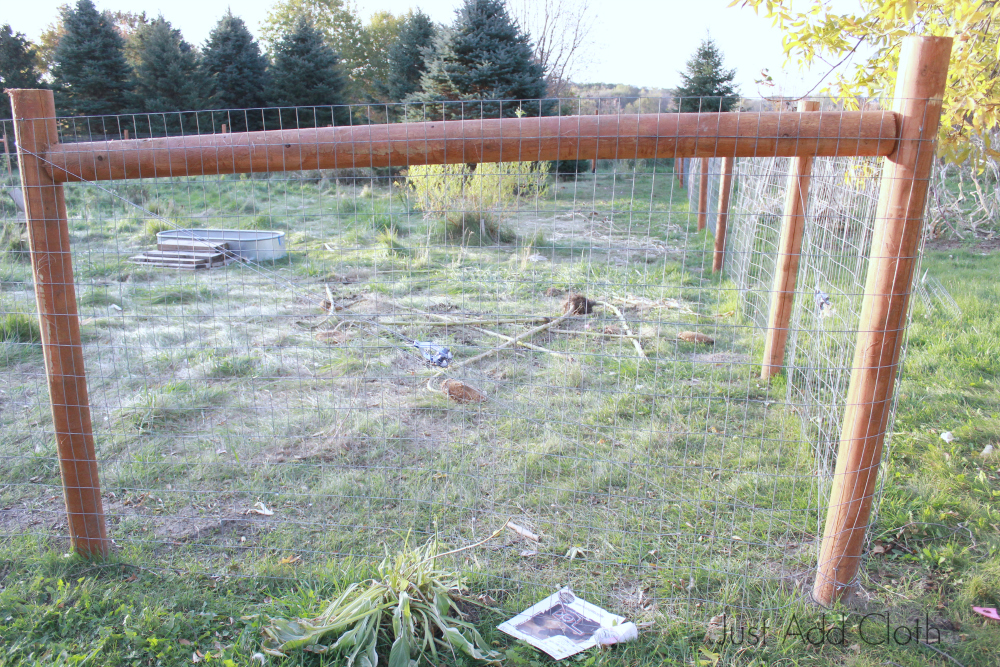
Overall, making a bird yard was the right call for our small farm. Most bigger farms have no need to fence in the chickens. However, our farm fields are within 10 acres of the house, so the chickens easily wandered far enough to dig up our crops and it was pretty irritating, not to mention destroying our livelihood.
DIYing our fencing was the best choice for us. I actually had a company give me an estimate for them to do it in a single day and they quoted me $10k!!! So, we did not have the cash. We didn’t have the time either, so doing it ourselves took a couple months. However, we were able to build the whole thing for about $900. Some of the tools cost extra, but they are tools we will use again on many other projects, so I don’t think it fair to include their full value in our costs. In fact, we are thinking we should build another sim8lar fence around our fruit tree grove to keep the deer out.
Either way, we saved over 90 percent by doing it ourselves. And we learned new skills and can proudly say “we built that” which is priceless.
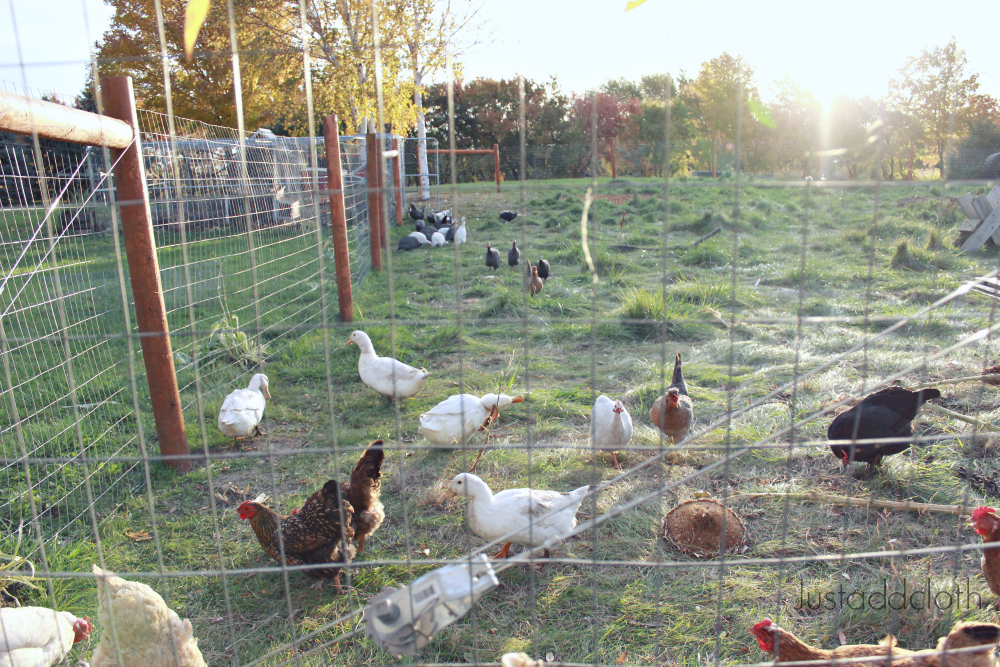
And with such a huge space for them, we don’t need to worry about chicken math. Haha.

